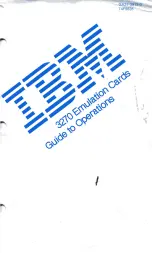
103BCommunication
10.2 PROFINET
S7-1200 Programmable controller
System Manual, 11/2011, A5E02486680-05
401
10.2.2.4
TCP and ISO on TCP
Transport Control Protocol (TCP) is a standard protocol described by RFC 793:
Transmission Control Protocol. The primary purpose of TCP is to provide reliable, secure
connection service between pairs of processes. This protocol has the following features:
●
An efficient communications protocol since it is closely tied to the hardware
●
Suitable for medium-sized to large data amounts (up to 8192 bytes)
●
Provides considerably more facilities for applications, notably error recovery, flow control,
and reliability
●
A connection-oriented protocol
●
Can be used very flexibly with third-party systems which exclusively support TCP
●
Routing-capable
●
Only static data lengths are applicable.
●
Messages are acknowledged.
●
Applications are addressed using port numbers.
●
Most of the user application protocols, such as TELNET and FTP, use TCP.
●
Programming effort is required for data management due to the SEND / RECEIVE
programming interface.
International Standards Organization (ISO) on Transport Control Protocol (TCP) (RFC 1006)
(ISO on TCP) is a mechanism that enables ISO applications to be ported to the TCP/IP
network. This protocol has the following features:
●
An efficient communications protocol closely tied to the hardware
●
Suitable for medium-sized to large data amounts (up to 8192 bytes)
●
In contrast to TCP, the messages feature an end-of-data identification and are message-
oriented.
●
Routing-capable; can be used in WAN
●
Dynamic data lengths are possible.
●
Programming effort is required for data management due to the SEND / RECEIVE
programming interface.
Using Transport Service Access Points (TSAPs), TCP protocol allows multiple connections
to a single IP address (up to 64K connections). With RFC 1006, TSAPs uniquely identify
these communication end point connections to an IP address.
TSEND_C and TRCV_C
The TSEND_C instruction combines the functions of the TCON, TDISCON and TSEND
instructions. The TRCV_C instruction combines the functions of the TCON, TDISCON, and
TRCV instructions. (Refer to "TCON, TDISCON, TSEND, AND TRCV (Page 408)" for more
information on these instructions.)













































